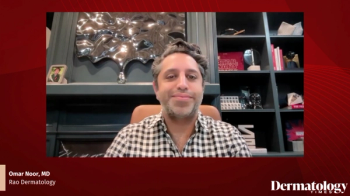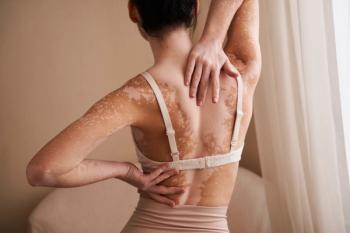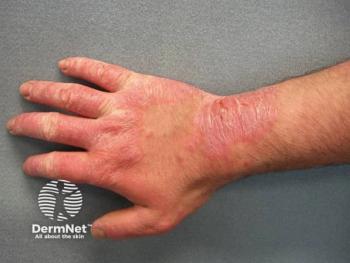
Managing Wound Risks in Patients on TKIs
Key Takeaways
- TKIs, while effective in cancer treatment, can impair wound healing by inhibiting VEGFRs and other growth factor receptors, affecting angiogenesis and fibroblast activity.
- A systematic review identified 24 TKIs with significant evidence of adverse effects on wound repair, including commonly used drugs like sunitinib and cabozantinib.
Explore how tyrosine kinase inhibitors hinder wound healing, revealing critical insights for clinicians in dermatology and oncology.
Tyrosine kinase inhibitors (TKIs), lauded for their precision in targeting oncogenic pathways, have dramatically reshaped modern cancer therapeutics.1 Yet, as their use continues to rise, a critical dermatologic consideration has emerged: their potential to impair wound healing.2 A recent systematic review by Nahm and Falanga, published in the International Wound Journal, explores this underrecognized but increasingly relevant clinical issue.3
Background
TKIs operate by disrupting aberrant cell signaling involved in tumor progression, often through antiangiogenic pathways. Chief among these is the inhibition of vascular endothelial growth factor receptors (VEGFRs), which suppresses tumor blood supply. However, VEGF signaling is also essential for normal tissue repair processes. Inhibition of VEGFRs—alongside secondary targets such as epidermal growth factor receptors (EGFRs), fibroblast growth factor receptors (FGFRs), and platelet-derived growth factor receptors (PDGFRs)—can interfere with angiogenesis, fibroblast activity, keratinocyte proliferation, and granulation tissue formation, all of which are vital for effective wound healing.
Methods and Materials
Nahm and Falanga assessed all 63 FDA-approved TKIs as of January 2024, identifying 24 agents with moderate to strong evidence of adverse effects on wound repair. Their methodology included an extensive literature review and analysis of prescribing information, preclinical studies, case reports, and clinical trials. Among the implicated agents were commonly used drugs such as sunitinib, cabozantinib, sorafenib, and lenvatinib.
For example, cabozantinib, which inhibits VEGFR2, MET, and AXL, has been associated with significant wound complications. In a phase II study involving patients with salivary gland carcinoma, researchers found 24% developed grade 3 to 5 wound issues, including dehiscence and delayed healing. Pazopanib, another potent VEGFR and PDGFR inhibitor, has shown impaired fibroblast migration and collagen production in vitro, correlating with case reports of poor healing following surgical interventions.
The spectrum of complications is broad, ranging from delayed epithelialization and dehiscence to more severe events such as ulceration and fistula formation. Preclinical animal studies also reinforce these findings; mice and rat models treated with high-dose TKIs demonstrated reduced granulation tissue, impaired tensile strength, and slower wound contraction.
Discussion
Importantly, the review provides guidance on perioperative management of patients on TKIs. Given the variability in drug half-lives and healing timelines, cessation strategies must be tailored. For instance, sunitinib (half-life ~51 hours) generally requires discontinuation at least 1 week prior to elective surgery, resuming only after adequate healing. Lenvatinib and sorafenib have similar guidance, often recommending a window of at least 3 to 5 drug half-lives before any planned surgical procedure.
Notably, no prospective randomized controlled trials to date have evaluated wound healing as a primary endpoint for TKIs. Nonetheless, the consistency of case reports, mechanistic studies, and safety data across multiple agents offers compelling evidence that clinicians should not ignore. As TKIs are increasingly employed as neoadjuvant therapies, careful coordination among dermatologists, surgeons, and oncologists is essential.
From a dermatologic standpoint, this intersection has immediate practical implications. Patients undergoing Mohs surgery, skin grafting, or chronic wound management may experience suboptimal outcomes if TKI-related risks are not proactively managed. Furthermore, the dermatologic manifestations of TKI toxicity—such as hand-foot skin reactions, rashes, and ulcerations—may themselves complicate or mask surgical site complications.
Conclusion
Overall, the review by Nahm and Falanga underscores an urgent need for increased awareness among dermatology professionals. The therapeutic gains offered by TKIs must be balanced against their systemic effects, especially in procedures reliant on robust wound healing. Continued research and cross-specialty collaboration will be vital to optimize care for this growing patient population.
References
- Chamoun K, Kantarjian H, Atallah R, et al. Tyrosine kinase inhibitor discontinuation in patients with chronic myeloid leukemia: a single-institution experience. J Hematol Oncol. 2019;12(1):1. Published 2019 Jan 3. doi:10.1186/s13045-018-0686-1
- Li J, Zhang YP, Kirsner RS. Angiogenesis in wound repair: angiogenic growth factors and the extracellular matrix. Microsc Res Tech. 2003;60(1):107-114. doi:10.1002/jemt.10249
- Nahm WJ, Falanga V. The adverse impact of tyrosine kinase inhibitors on wound healing and repair. Int Wound J. 2025;22(4):e70513. doi:10.1111/iwj.70513
Newsletter
Like what you’re reading? Subscribe to Dermatology Times for weekly updates on therapies, innovations, and real-world practice tips.



















